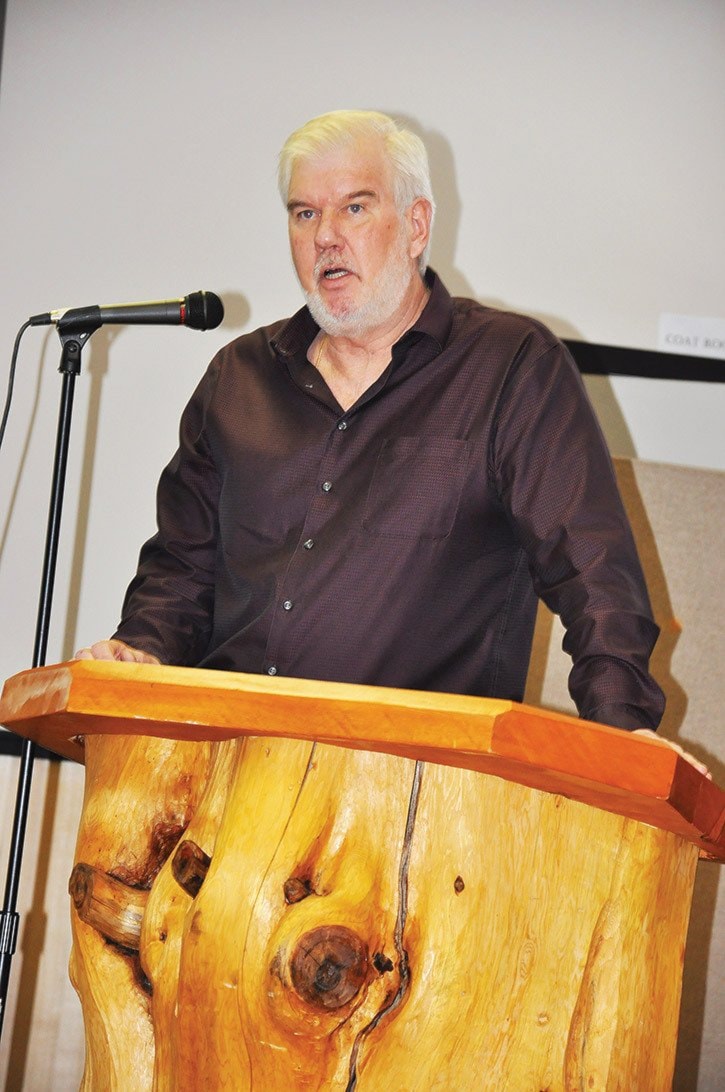The Cariboo Regional District is confident it will decrease its budget by 1.2 and 1.3 per cent in 2013.
“We do have some additional services being provided in the North Cariboo so those people won’t see as high of a decrease as we’re seeing in other areas, but overall our tax requisition is going down this year,” CRD chair Al Richmond said.
The decrease is largely due to the elimination of the debt for the libraries in Quesnel and 100 Mile House.
“That goes back to fiscal management. We put money away and saved so we didn’t have to borrow all the money to do the job. We were able to pay them off in five years. We’re seeing monetary savings because of good fiscal management,” Richmond said.
Projections show the overall budget — made up of grants and tax requisitions — will continue to decrease through the next five years.
In 2012 it was $42,122,507, in 2013 it will be $38,405,955, and by 2017 it will be $34,218,70.
Richmond said part of the decrease is due to the scarcity of grant funding, which means a slow down in capital building and capital expenditures going into the near future.
“We saw some peaks. For example in 2011, we did some water upgrades. A reservoir at 108 Mile, water system work at Horse Lake and Canim Lake. They all roll into an overall budget, making it high.”
An old debt from borrowing for the hospitals in Williams Lake, Quesnel and 100 Mile House will be down to $25,000 by 2015, which will then result in the elimination of the Cariboo Regional Hospital District, leaving one Cariboo Chilcotin Regional Hospital District.
The Cariboo-Chilcotin Regional Hospital District replaced the Cariboo Regional Hospital District as a result of a boundary amendment (the two RHDs represent similar but not identical areas).
This has been the plan since the creation of the new Cariboo-Chilcotin Regional Hospital District.
Historically the CRHD plan was based on funding for $20 million every 10 years to the appropriate health authorities.
“The CRHD was borrowing to fund the capital requirements which resulted in annual interest costs of $1.5 million,” chief financial officer Scott Reid said.
A plan was put in place setting the residential tax rate at $75 per $100,000 of assessed value for property tax purposes, to accumulate and set aside funds or reserves which could be used for future capital requirements without resorting to borrowing and interest charges.
“In 2009, after three years at this level of taxation, the CCRHD board was able to decrease the residential tax rate from $75 per $100,000 of assessed value to $69 per $100,000 of assessed value.
The current 10-year plan, which went into effect in 2011, calls for a reduction in taxation each year until the residential tax rate reaches $50 per $100,000.
“With taxation levels as outlined above, and with actual capital expenditures over the same span of time, we anticipate capital reserves in excess of $20 million for year-end 2012,” Reid said.
Public budget meetings wrapped up with the final one in Williams Lake on Feb. 3.
“The one in Williams Lake was fairly well attended with some good input and some good dialogue,” Richmond said. “I am disappointed overall with the attendance we had, but that could mean either we’re doing a good job or the timing didn’t work for folks.”
People attending the meetings could take away a sheet outlining tax rates.
“Some folks say when they look at the overall understanding of where the budget’s going they’re happy with it, other people are sticklers for detail and want to talk about every single line there is and that’s fair too.”
For 2014, public budget meetings will begin in September, he added.
